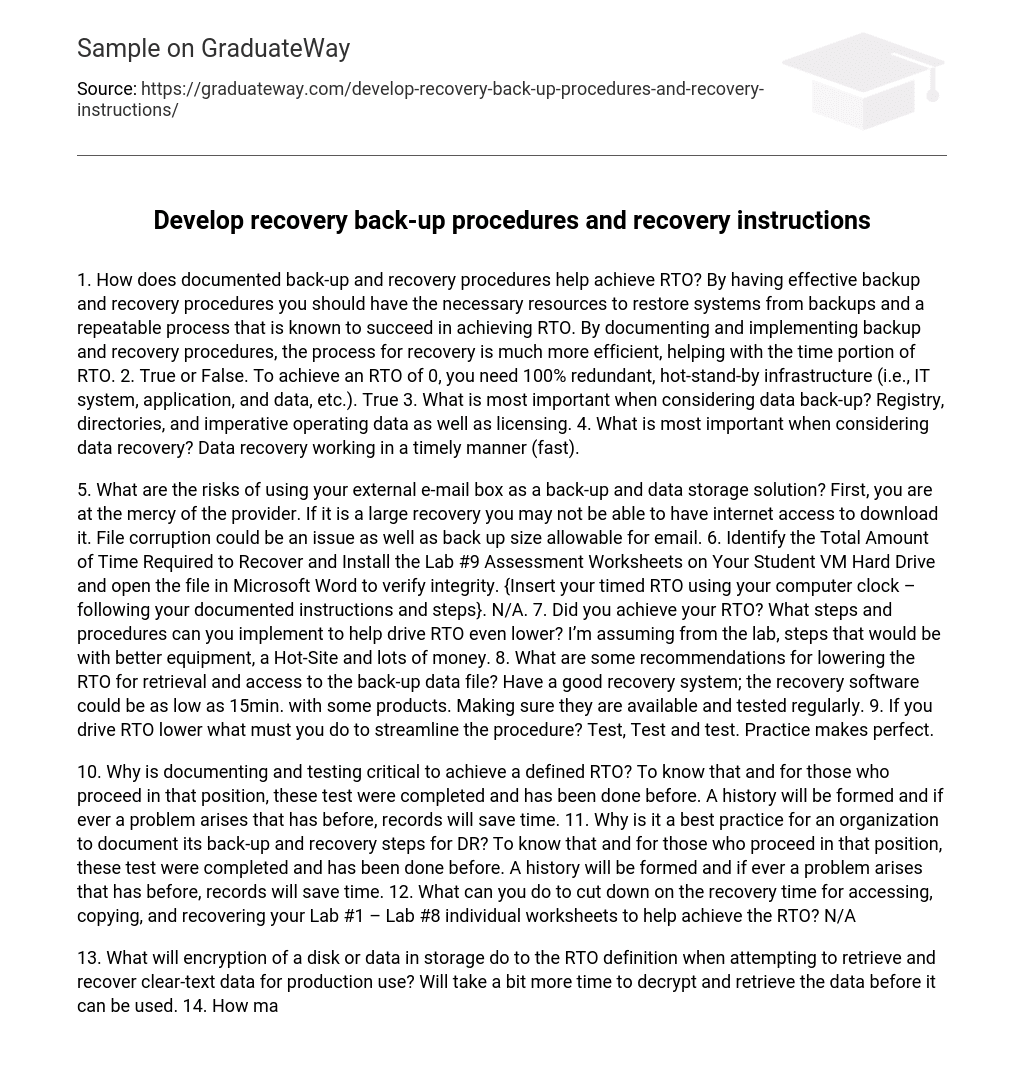1. How does documented back-up and recovery procedures help achieve RTO? By having effective backup and recovery procedures you should have the necessary resources to restore systems from backups and a repeatable process that is known to succeed in achieving RTO. By documenting and implementing backup and recovery procedures, the process for recovery is much more efficient, helping with the time portion of RTO. 2. True or False. To achieve an RTO of 0, you need 100% redundant, hot-stand-by infrastructure (i.e., IT system, application, and data, etc.). True 3. What is most important when considering data back-up? Registry, directories, and imperative operating data as well as licensing. 4. What is most important when considering data recovery? Data recovery working in a timely manner (fast).
5. What are the risks of using your external e-mail box as a back-up and data storage solution? First, you are at the mercy of the provider. If it is a large recovery you may not be able to have internet access to download it. File corruption could be an issue as well as back up size allowable for email. 6. Identify the Total Amount of Time Required to Recover and Install the Lab #9 Assessment Worksheets on Your Student VM Hard Drive and open the file in Microsoft Word to verify integrity. {Insert your timed RTO using your computer clock – following your documented instructions and steps}. N/A. 7. Did you achieve your RTO? What steps and procedures can you implement to help drive RTO even lower? I’m assuming from the lab, steps that would be with better equipment, a Hot-Site and lots of money. 8. What are some recommendations for lowering the RTO for retrieval and access to the back-up data file? Have a good recovery system; the recovery software could be as low as 15min. with some products. Making sure they are available and tested regularly. 9. If you drive RTO lower what must you do to streamline the procedure? Test, Test and test. Practice makes perfect.
10. Why is documenting and testing critical to achieve a defined RTO? To know that and for those who proceed in that position, these test were completed and has been done before. A history will be formed and if ever a problem arises that has before, records will save time. 11. Why is it a best practice for an organization to document its back-up and recovery steps for DR? To know that and for those who proceed in that position, these test were completed and has been done before. A history will be formed and if ever a problem arises that has before, records will save time. 12. What can you do to cut down on the recovery time for accessing, copying, and recovering your Lab #1 – Lab #8 individual worksheets to help achieve the RTO? N/A
13. What will encryption of a disk or data in storage do to the RTO definition when attempting to retrieve and recover clear-text data for production use? Will take a bit more time to decrypt and retrieve the data before it can be used. 14. How many total steps did your back-up and recovery procedures consist of for this Lab exercise? Are there any that can be combined or streamlined? Not sure. But the fewer steps you have and easier the steps are, the less confusion and fewer mistakes will happen and that will save time on recovery, as well as a good recovery system. 15. If the individual accessing the system for DR purposes was not familiar with the IT system and required system administrator login credentials, what additional step is required in the recovery phase? Finding the secured documents that have all the information and steps needed to recover.





